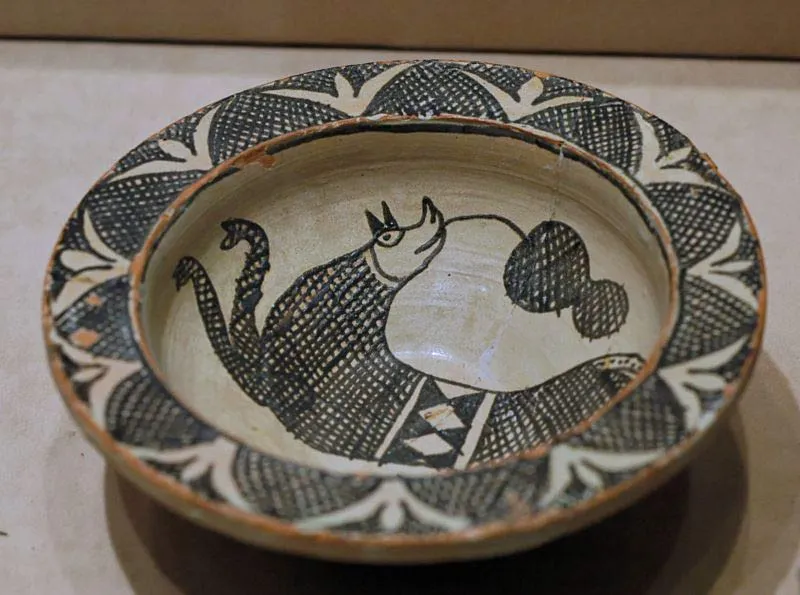Introduction
In the world of design and decor, few eras have left as indelible a mark as the mid-20th century. The mid-century modern movement brought with it a distinct aesthetic that combined form and function in a way that captured the essence of the era’s innovation and optimism. At the heart of this movement were mid-century ceramics – a diverse and captivating array of pottery that continues to inspire and adorn homes today. Join us as we delve into the world of mid century ceramics, exploring their history, iconic styles, and enduring appeal.
The Roots of Mid-Century Ceramics
The mid-century modern movement emerged in the aftermath of World War II, between the 1940s and 1960s. A reaction to the ornate and heavily ornamented designs of the earlier decades, mid-century design sought to streamline aesthetics while embracing new materials and manufacturing techniques. Ceramics, already a well-established art form, found itself transformed by the movement’s ethos of clean lines, organic forms, and a focus on functionality.
Iconic Styles and Designers
- Scandinavian Simplicity: Scandinavian countries like Sweden, Denmark, and Finland played a significant role in shaping mid-century ceramics. Designers such as Stig Lindberg, Lisa Larson, and Hans Wegner created pieces that reflected the region’s minimalistic and functional design philosophy. Pieces often featured natural motifs, gentle curves, and muted color palettes.
- Studio Pottery Movement: While factory-produced ceramics were popular, the mid-century era also saw the rise of the studio pottery movement. Artists like Lucie Rie and Bernard Leach embraced handmade techniques, resulting in unique and expressive pieces. These ceramics often showcased the beauty of imperfections and the artisan’s hand at work.
- Atomic Age and Space Age: The mid-century period coincided with the excitement of the Atomic and Space Ages, and ceramics began to incorporate futuristic and experimental designs. Bold geometric patterns, asymmetrical shapes, and metallic glazes were common, reflecting the era’s fascination with technology and innovation.
Enduring Appeal
The allure of mid-century ceramics lies in their timeless qualities and the unique blend of art and functionality they offer. Here’s why they continue to captivate collectors, decorators, and enthusiasts:
- Design Evolution: Mid-century ceramics encapsulate a transitional period in design history, bridging the gap between traditional craftsmanship and modern aesthetics. This diversity allows them to seamlessly fit into contemporary and eclectic interiors.
- Iconic Aesthetics: The clean lines, organic shapes, and understated elegance of mid-century ceramics have a universal appeal that complements a wide range of decor styles, from minimalism to bohemian chic.
- Craftsmanship: Whether factory-produced or handcrafted, mid-century ceramics often boast exceptional craftsmanship. The dedication to quality materials and techniques ensures that many pieces have stood the test of time, maintaining their integrity and value.
- Nostalgia and Collectibility: For those who appreciate nostalgia, mid-century ceramics evoke memories of a bygone era. Collectors value them not only for their beauty but also as a tangible link to a significant period in design history.
Incorporating Mid-Century Ceramics into Modern Spaces
The beauty of mid-century ceramics lies in their versatility – they can be seamlessly integrated into contemporary interiors to add character and charm. Here are a few ideas to consider:
- Accent Pieces: Place a mid-century ceramic vase or bowl on a coffee table, sideboard, or bookshelf. Its unique design will serve as a conversation starter while adding a touch of elegance to your space.
- Wall Art: Hang decorative mid-century ceramic plates or tiles on your walls for a pop of color and texture. This can be a creative way to pay homage to the era’s design sensibilities.
- Tableware: Elevate your dining experience with mid-century ceramic tableware. From dinner plates to coffee mugs, these pieces will infuse your meals with a touch of timeless style.
- Planters: Embrace the era’s affinity for organic forms by using mid-century ceramic planters to display your favorite indoor plants.
Conclusion
Mid-century ceramics are more than just artifacts from a bygone era; they are a testament to the enduring influence of mid-century modern design. With their iconic styles, innovative techniques, and timeless appeal, these ceramics continue to enrich and enliven contemporary spaces. As we celebrate the beauty of mid-century ceramics, let us not only admire their aesthetics but also appreciate the history and craftsmanship that they represent, connecting us to a pivotal era in design evolution.
